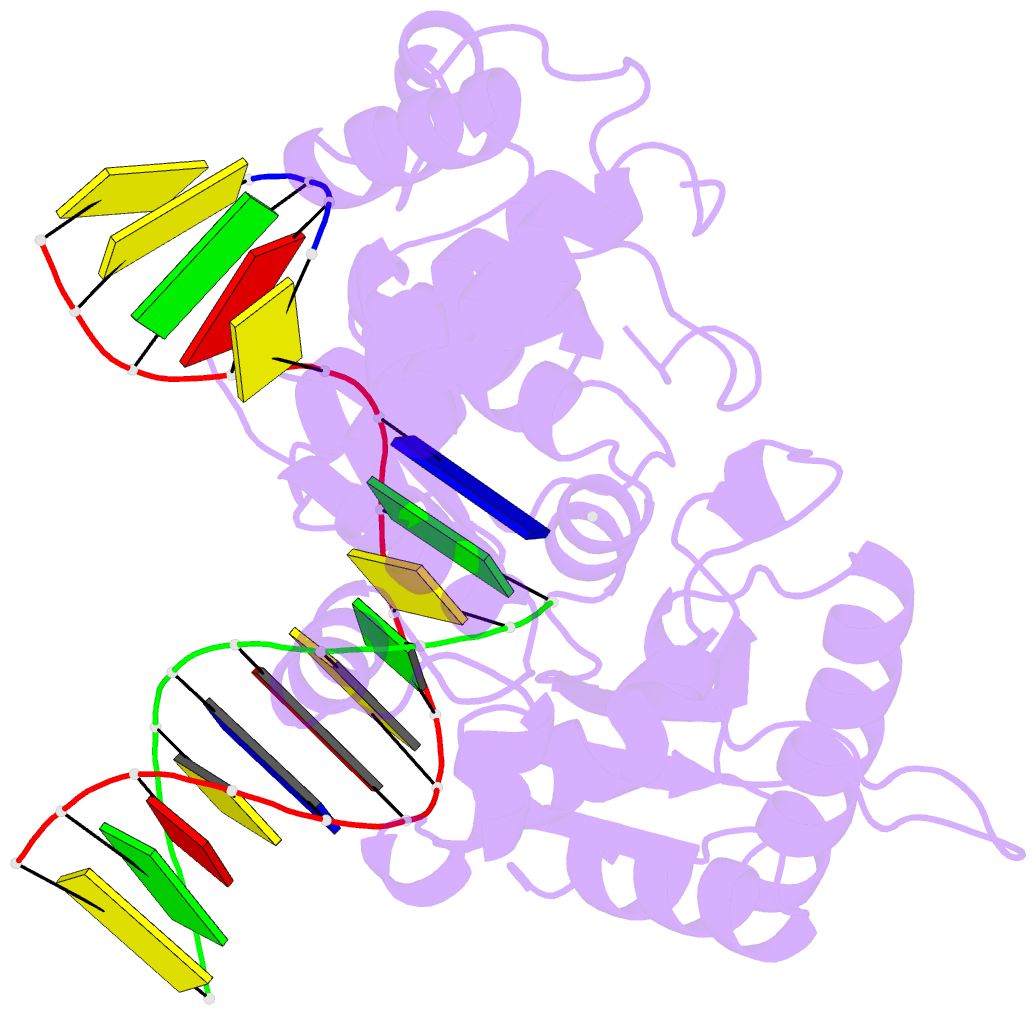Summary information and primary citation
- PDB-id
- 6crc; SNAP-derived features in text and JSON formats;
DNAproDB
- Class
- transferase-DNA
- Method
- X-ray (2.3 Å)
- Summary
- Ternary complex crystal structure of DNA polymerase beta with a dideoxy terminated primer with ccl2, beta, gamma datp analogue
- Reference
- Batra VK, Oertell K, Beard WA, Kashemirov BA, McKenna CE, Goodman MF, Wilson SH (2018): "Mapping Functional Substrate-Enzyme Interactions in the pol beta Active Site through Chemical Biology: Structural Responses to Acidity Modification of Incoming dNTPs." Biochemistry, 57, 3934-3944. doi: 10.1021/acs.biochem.8b00418.
- Abstract
- We report high-resolution crystal structures of DNA polymerase (pol) β in ternary complex with a panel of incoming dNTPs carrying acidity-modified 5'-triphosphate groups. These novel dNTP analogues have a variety of halomethylene substitutions replacing the bridging oxygen between Pβ and Pγ of the incoming dNTP, whereas other analogues have alkaline substitutions at the bridging oxygen. Use of these analogues allows the first systematic comparison of effects of 5'-triphosphate acidity modification on active site structures and the rate constant of DNA synthesis. These ternary complex structures with incoming dATP, dTTP, and dCTP analogues reveal the enzyme's active site is not grossly altered by the acidity modifications of the triphosphate group, yet with analogues of all three incoming dNTP bases, subtle structural differences are apparent in interactions around the nascent base pair and at the guanidinium groups of active site arginine residues. These results are important for understanding how acidity modification of the incoming dNTP's 5'-triphosphate can influence DNA polymerase activity and the significance of interactions at arginines 183 and 149 in the active site.





